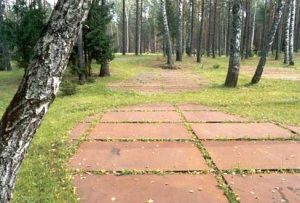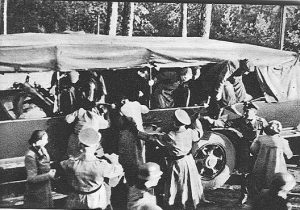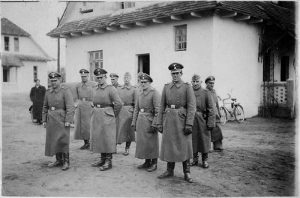In the next post of Fun & Games we return to the book One hundred problems in elementary Mathematics, by the Polish mathematician Hugo Steinhaus (1887-1972). So today we will devote this entry to continuing the Scottish Café stories (for the first four see Stories of the Scottish Café: 1. Steinhaus y Banach, Stories of the Scottish Café: 2. The Mathematical Gathering, Stories of the Scottish Café: 3. The Scottish Notebook and Stories of the Scottish Café: 4. The Scottish Café Awards).
Among the group that frequented the mathematical gatherings in the Lwów cafés, some had a long and fruitful life, such as our known Hugo Steinhaus (1887-1972), Stanisław Ulam (1909-1984), Marek Kac (1914-1984), Stanisław Mazur (1905-1981), or Władyslaw Orlicz (1903-1990). Others, not so much, as many of them were victims of the irrational efficiency we human beings have for destroying each other, which worked so well during World War II.

Stefan Kaczmarz was perhaps the first member of the circle to fall, in May 1940, when his friends were still meeting at the Scottish Café. Kaczmarz was a member of the Polish intelligence services and perished in the so-called Katyn Massacre; there, agents of the Soviet NKVD – a germ of what would later become the KGB – slaughtered 15,000 victims – 20,000 according to other sources – including soldiers and officers of the Polish army, intelligence agents, policemen, spies, and ordinary civilians. It so happens that in 2010, the then Polish president Lech Kaczynski perished in a plane crash at the Russian Smolensk air base while travelling there to commemorate the 70th anniversary of the Katyn massacre.
In 1941, after taking Lwów, the Nazis carried out a massacre at the University in which 45 people were killed, including professors, scientists from the Polytechnic and their families. On the night of 3 July 1941, Antoni Łomicki, Włodzimierz Stożėk – together with his sons Eustachy and Emanuel – and Stanisław Ruziewicz were among the participants in the mathematical gatherings in the cafés. Days later, the geometer Kazimiers Bartel, who had been Prime Minister of Poland (1926-1930) – and also Rector of the University – was also assassinated: Bartel had refused Himmler’s offer to head a puppet government of the Reich.

Lwów’s massacre was not the result of the heat of battle. “The preparation was meticulous,” wrote Roma Kaluża in Banach’s biography, “and even the place for the executions was carefully chosen. The murders were carried out in the greatest secrecy, as opposed to what was done in Kraków, which had a greater impact on public opinion in the West. The executing commando appeared, went into action just after the passage of the first line of advancing troops, did its work and disappeared”. The massacre was thus coldly planned, and was part of the Ausserordentliche Befrieddungsaktion, that is, of the extraordinary actions for “pacification” planned by Himmler to eliminate the Polish intellectual elites. These actions had already been applied in Kraków where, after being conquered at the beginning of the war, a good number of professors from the Jagiellonsky University – the same university where Copernicus once studied – had been deported to concentration camps. In Lwów, the massacre had to wait a couple more years until, after the breakdown of the Ribbentrop-Molotov Agreement, the Germans occupied the town at the start of their offensive against the Soviet Union. But it had already been planned since 1939: “There is proof that the criminals had prepared a list of victims,” said Józef Sieradzki, who lived in Lwów during the war. “That list had to have been written in 1938-39, since the Gestapo men were looking for two professors who had died between 1939 and 1941: a dermatologist, Professor Leszczyński, and an ophthalmologist, Professor Bednarski. In both cases the widows were asked to show their husbands’ death certificates”.

Finally, it was the turn of the Jewish members of the mathematical club. Stanisław Saks and Juliusz Schauder were executed by the Gestapo: one on 23 November 1942 in Warsaw, the other possibly in October 1943. Herman Auerbach, first imprisoned in the Lwów ghetto, was exterminated in Belzec, the first of the extermination camps the Nazis operated in Poland.
References
A.J. Durán, Pasiones, piojos, dioses… y matemáticas, Destino, Barcelona, 2009.

Leave a Reply